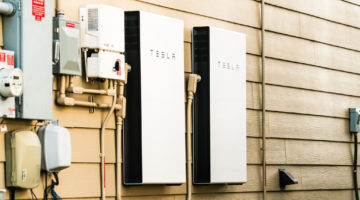
What’s happening?
Snomageddon! Snowpolocype! Snow my God! In other words, it’s snowing.
With red weather alerts issued in England, Wales, Scotland and Ireland, the Beast from the East and Storm Emma have succeeded in bringing the UK to a standstill. In Glasgow hundreds were trapped in their cars for over 13 hours overnight, in Ireland a 4pm curfew has been introduced, and here in London transport disruptions have prevented countless businesses from opening. Even as I write this I’m in a pretty lonely office, half of our Green Agers are stuck in their homes completely snowed in.
Will my heating turn off today?
No! Not unless you’re a large industrial gas user. As the current cold spell continues the bigger industrial consumers can expect restricted gas supply in order to divert resources to the domestic sector.
Where does our gas come from?
In the UK over 80% of domestic residences use gas to heat their homes owing to the fact that, despite lower efficiency per-unit, gas is still roughly 3 times cheaper than electricity (though much of our electricity is generated in gas power plants). Given the mild but changeable climate of Britain, the gas industry is prone to massive peaks and troughs in demand. In the past our solution has been to increase production in the North Sea, unfortunately that is no longer as option. These days the grid relies on gas imported from Europe and Norwegian offshore production, as well as gas and LNG storage.
Buying in fuel from Europe is an expensive business, so we attempt to purchase gas when the price is low and keep it in reserve. Using meteorological evidence and data projections we try to figure out exactly how much we’ll need in reserve for any given season or time period. It sounds alright in theory, but then when unseasonable weather hits – a nationwide snowstorm in March, for example – the projected reserves can fail to meet requirements.
Why do we store our gas and where do we store it?
Gas storage is the most intuitive way to handle our gas because it uses fluctuations in the market to allowed us to purchase at the lowest price and store it for future use. It’s a little like a storage heater, taking in the energy when it’s low cost and holding it until it’s needed. If the UK is a storage heater, though, then we’re not exactly a high performance one.
Until June 2017 a huge amount of our energy was stored at a facility known as Rough. A depleted gas field off the Yorkshire coast, Rough was responsible for around 70% of UK gas storage capabilities until it’s recent closure. This brought us from a capacity of 5.9% of our total annual consumption down to 1.8%. If that sounds like a lot of numbers and not all that concerning then think of it like this; based on annual demand and compared to places like France, Germany and Italy we now have less than a tenth of their storage abilities active. This worryingly low level of medium range storage therefore fills and empties repeatedly during the winter according to demand, but in unusual weather the subsequent dramatic rise in people using their gas heating can throw the fragile system into disarray. The closure of Rough has essentially removed any kind of buffer we have for extreme spikes in demand.
What about LNG?
Liquefied natural gas (LNG) is really just another type of gas storage with a bit of extra science added – it’s gas that has been converted to liquid form. As it only takes up about 1/600th of the volume of natural gas it’s a great was to easily and safely transport the fuel in non-pressurized storage. At the moment we have 3 terminals for LNG – one in Kent, two in South Wales. December 2017 saw some significant issues with the supply chain, congesting the system and limiting the supply from the interconnectors. Deliveries in the last couple of months mean that we’re now sitting on about 35% capacity of the terminals, but while effective the delivery system is still slow. For an LNG tanker to reach the terminal in Milford Haven from supply lines in Quatar takes a full two weeks. Were it not for the 35% that we’ve accumulated over past months then the freezing temperatures battering the UK could have been have been catastrophic.
Where do we go from here?
As alternative renewable solutions continue to improve gas will slowly become less important, but we are a long way from that happening. Brexit also puts us in an uncertain position on the European stage. New policies on fuel security in the EU include the ‘solidarity principle’, which requires member states to provide gas aid for each other in exceptional circumstances. However with Britain’s membership in the EU Internal Energy Market still undecided, this is not a directive that we can rest our laurels on. Our shortage will also bring great concern to Ireland, which is dependent on mainland Britain for the security of its gas supply. As Professor Michael Bradshaw puts it, “A ‘cold shoulder from Brussels’ could be just as damaging as the ‘beast from the east!’”
One solution to improve the UK situation on both a micro and macro scale would be to reduce gas usage and slash demand. At present, the UK is surging to over 400mcm a day, a rate that is fundamentally unsustainable. Simple solutions such as improved insulation could save the UK billions in gas heating costs. External wall insulation, one of the most effective forms of insulating a property, can cut individual heating bills by nearly 30%. What we’d love to see is increased government investment in schemes to aid this kind of long term, high impact improvement. Simply put, energy efficiency reduces demand for gas.













No Comments yet! Be the first one.